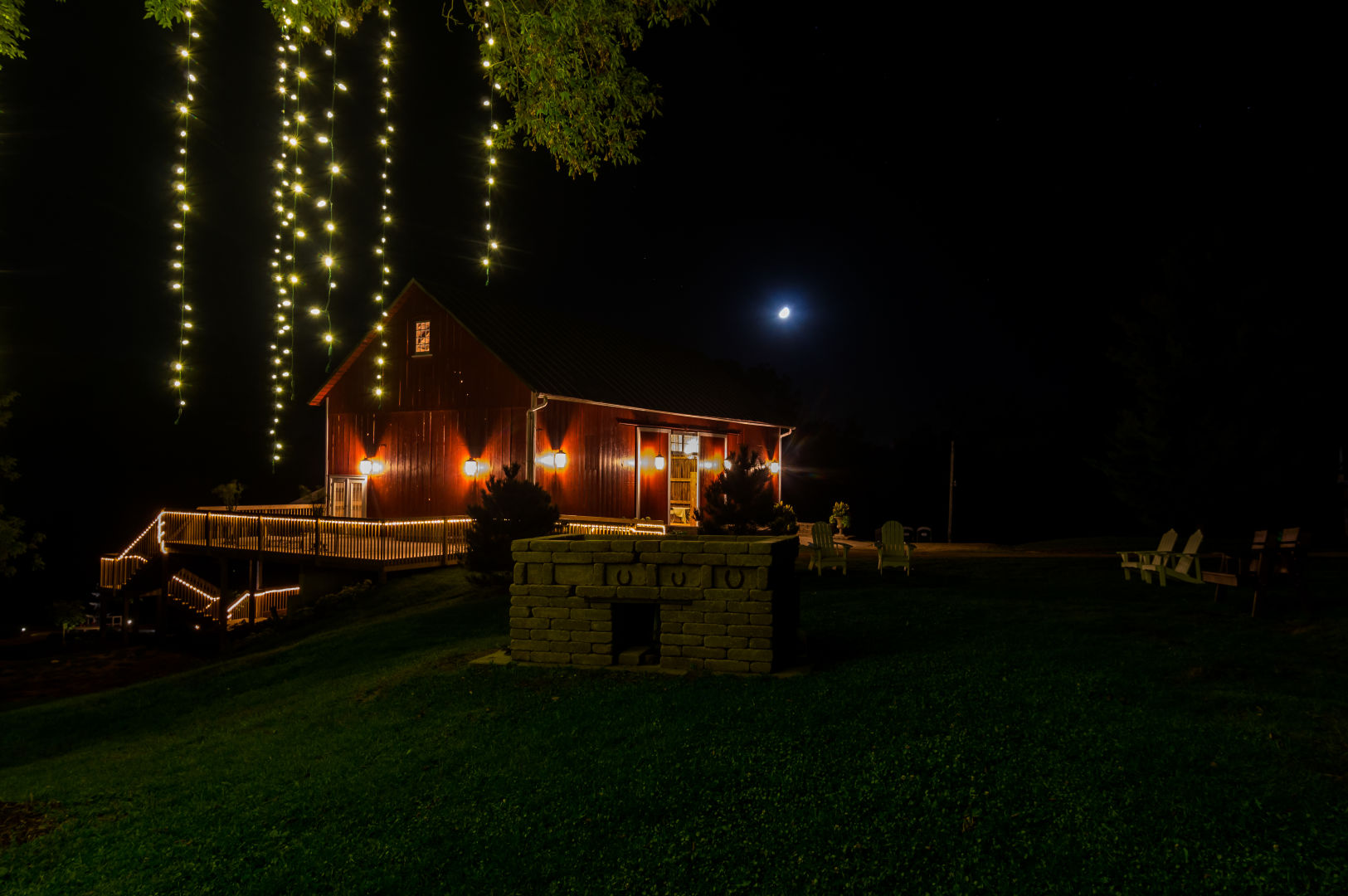Wedding Willow

This light up willow tree is one of Tradition’s signature projects, both for its look and its uniqueness to the company. Normally, the only lights that we leave up year round are our low voltage landscape lights–setups that are designed to be put in the ground and stay there. The lights on this wedding willow are the lights that we traditionally use for our holiday displays and are not designed to be left up for long periods of time. Because of this, the Traditions team had to get a little creative on how we were going to get the year round look that we wanted while still being able to service the tree when the strands inevitably had to be replaced.
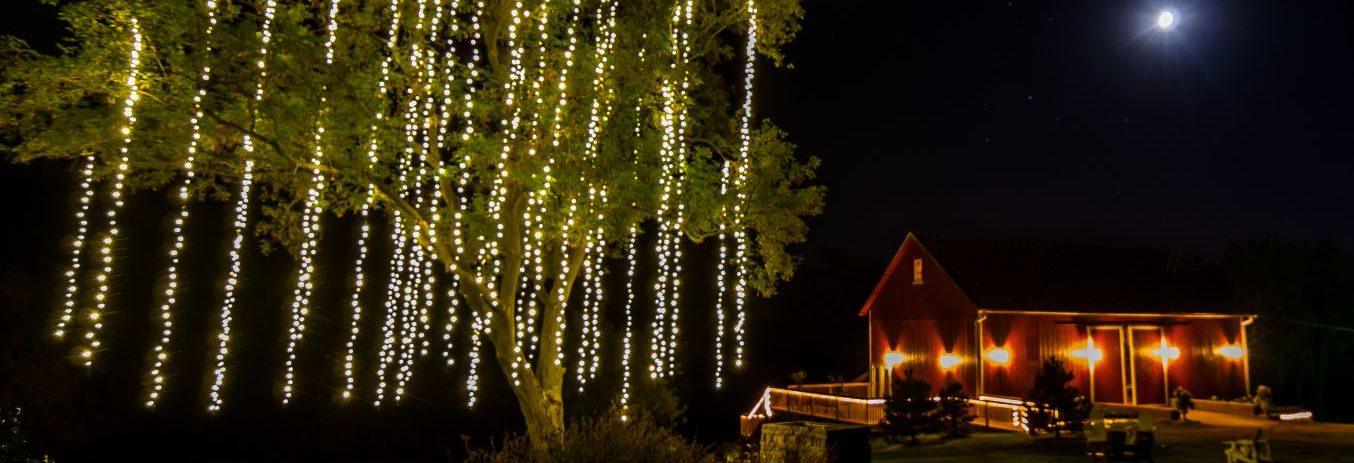
We started with just hanging the strands from the tops of the branches, knowing full well that when a strand when out, we were going to have to rent a boom to get high enough to replace the broken run. This worked for a time, both with us and the client, but because of the thin nature of the strand and the harsh winds, we were running into problems with the strands getting tangled high in the canopy of branches. Sometimes the wind was so bad it would cause a light strand in the run to break prematurely.
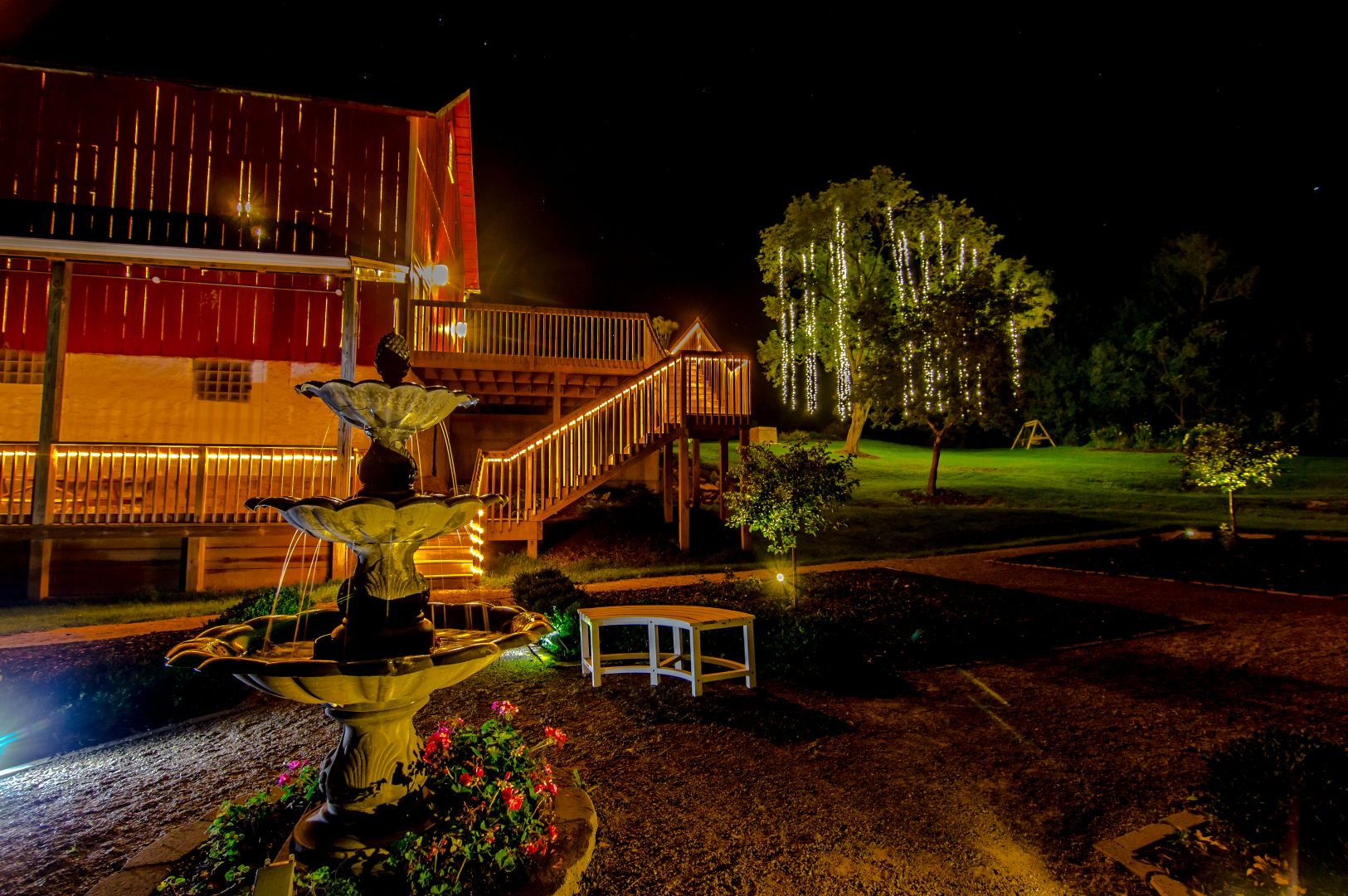
After servicing this for about a year, we went back to the drawing board. Our goal was a three part solution.
- Make the strands more sturdy and less vulnerable to the wind so they didn’t have to constantly be untangled.
- Make the strands stronger so they would hopefully not break prematurely.
- Come up with a system which allowed us to replace the dead strands without the use of a boom.
It was quite the goal.
We started with the wind problem. If we could make the strands of lights strong enough not to get tangled, they would by default be more suited to dealing with the wind. Our solution? Small strips of metal that we secured to the strand and then hung from the tree. This way, the strand would still move organically in the wind but would be almost impossible to tangle and even harder to break.
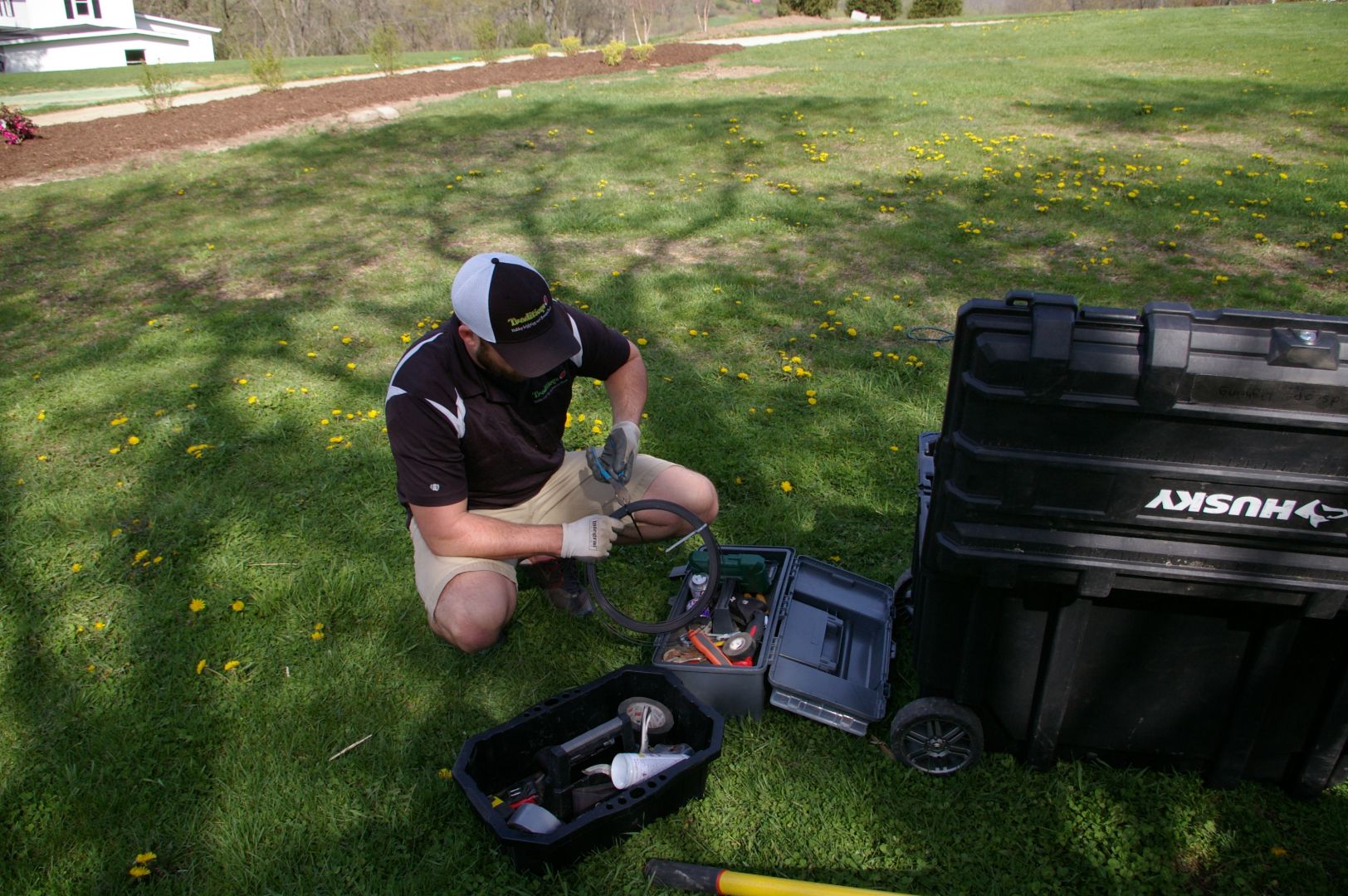
The second problem took a lot more fussing and work to try and make functional. After a lot of trial and error, we ended up using a system of steel cable and metal hooks to lower the strand when it was broken. We tried the system out in the patch of green next to the shop and it worked like a charm. Service calls could now be performed by using just a ladder. No more renting and driving a boom though our client’s yard to fix one bad strand!
From here, all we had to do was install the new system.
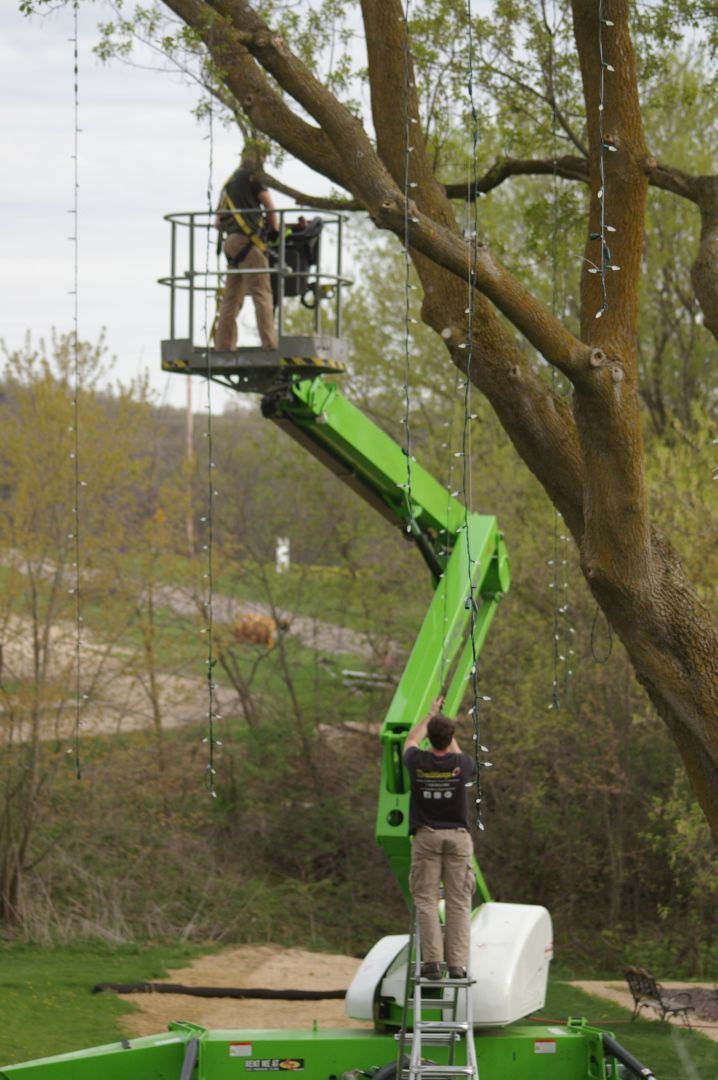
We rented the boom for the last time (for this project of course) and drove out to the Bridle Barn. One by one we dropped the stands down, installed the hardware, strapped the strands to their new metal support and hoisted them back up the tree. As the day went on, the old strands came down and the new setup was put into place.
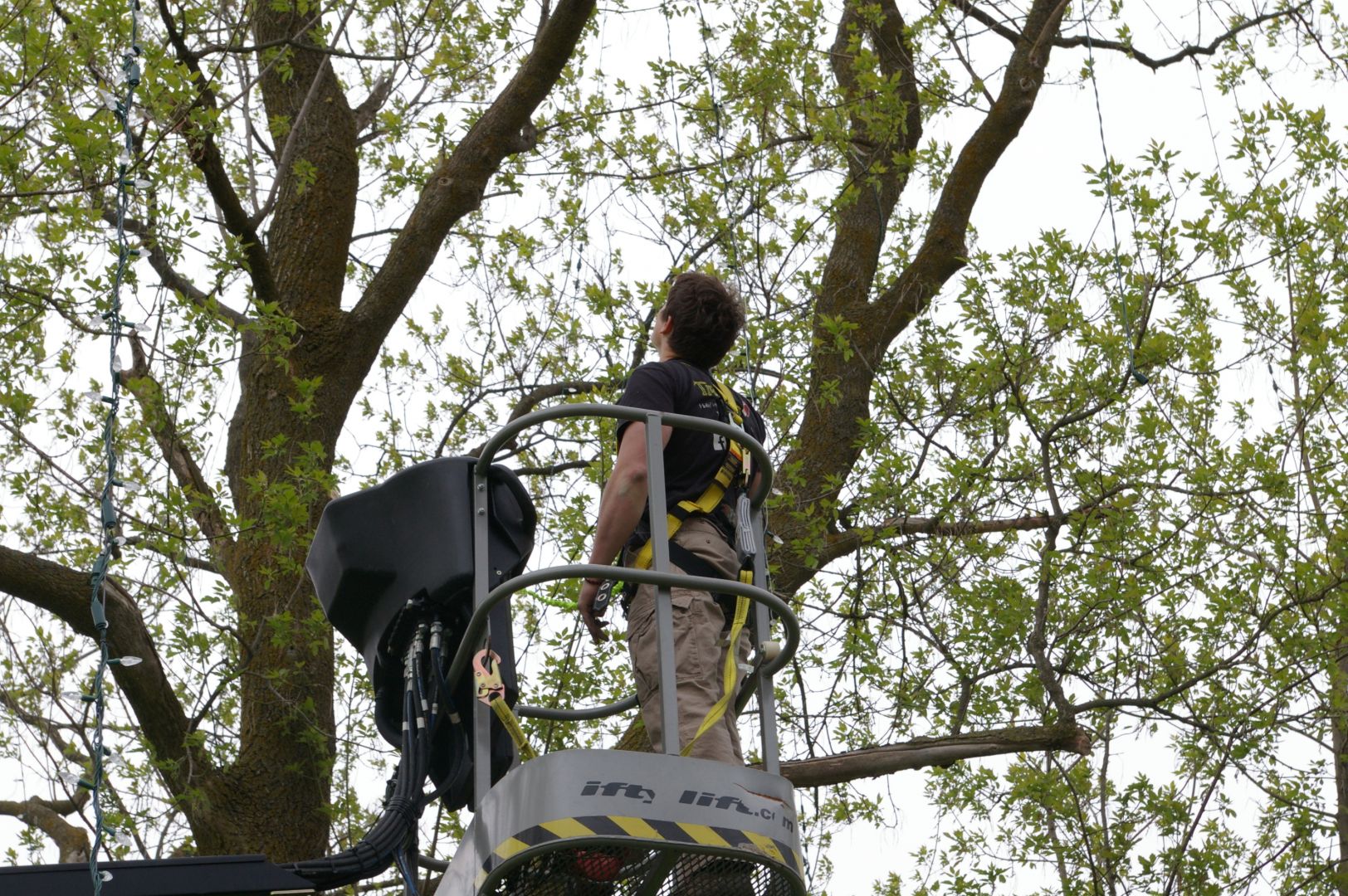
About half way through the install, we realized that we had a strand that was causing a short. It sometimes happens, if one of the strands is a dud, or has some internal damage. When you plug the bad strand in, the individual fuse in the strand will blow and cause all of the lights to go out. You have to then go through each strand to try and find the bad one, replacing the bad fuses every time you plug the bad one in. It can be a pain, but luckily, we rarely have to deal with the problem. For this project, it was a perfect opportunity to try out our new system. It worked flawlessly. Each run came down with minimal fuss and effort. In no time at all, we had the bad link removed, replaced, and whisking back up the tree, all without the help of a boom.
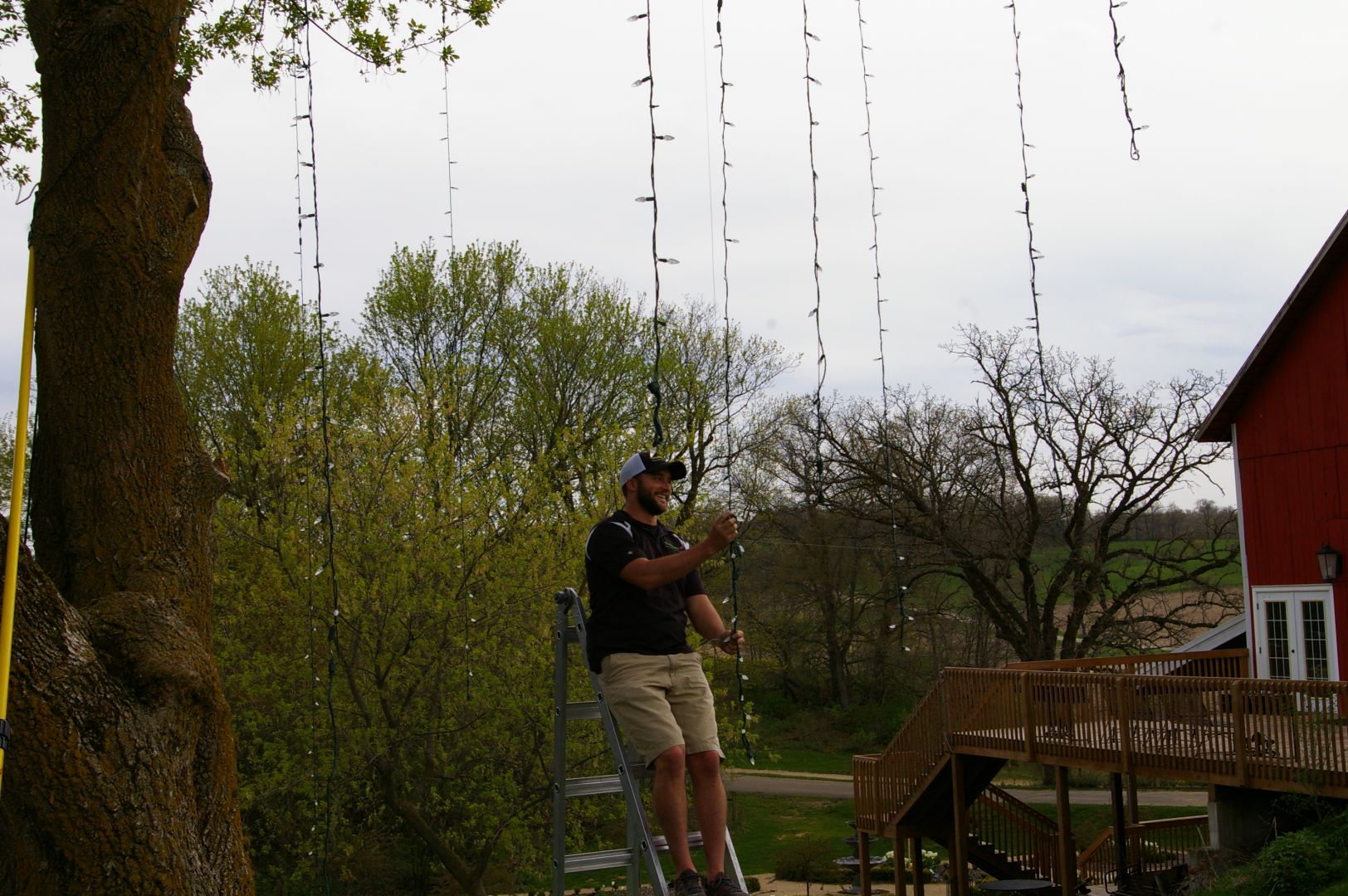
The tree is now glowing bright and beautiful all through the wedding season. Fixes now take less than an hour and can be done with one crew member instead of an entire team. We couldn’t be more happy with the end results.
